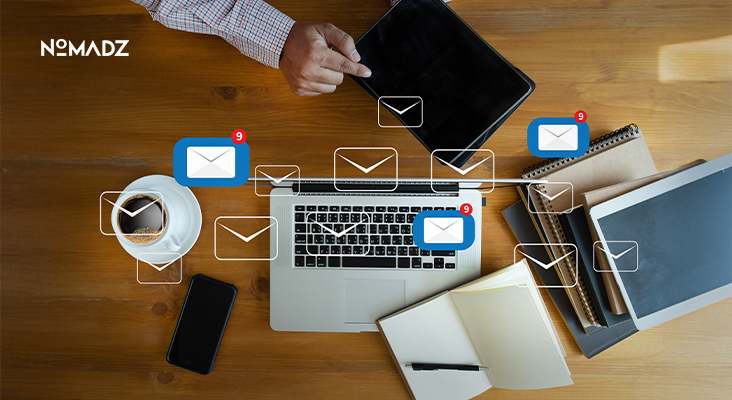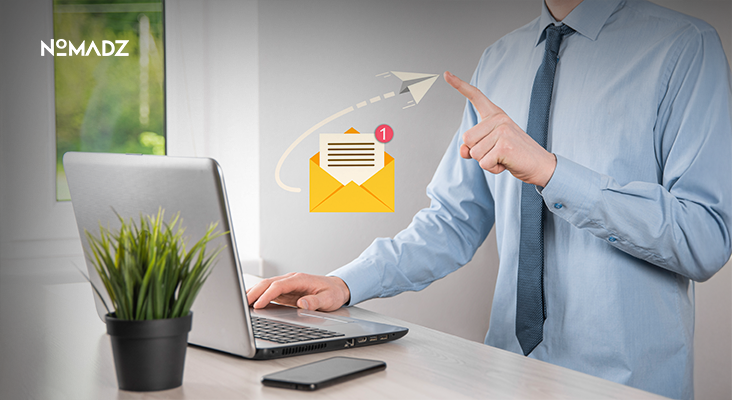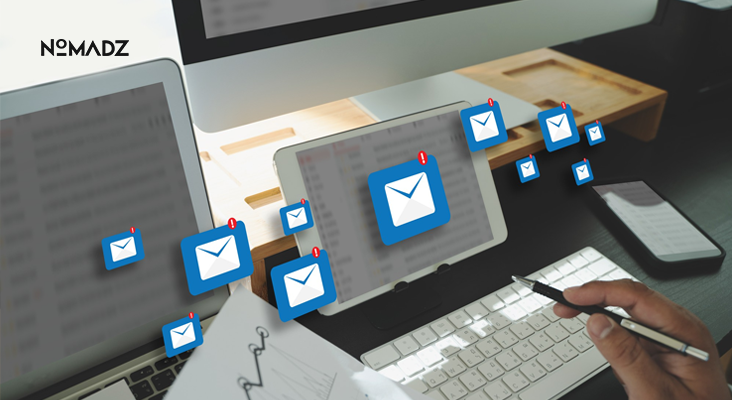What Is Email Automation and How to Send Mails Automatically?
Imagine that your emails were always on, automatically adding new contacts, reaching out to people who have not opened your emails in a while, and recovering carts that were left unfinished. That’s what email automation does. It allows companies to communicate well, stay informed, and grow with the same number of employees.
Scaling is the capacity to control in-person selling, which increases when a business is going well. Instead of handling emails to leads and customers yourself, you can concentrate on building your business. In this blog, we’ll walk through what email automation is, why it matters, how to set it up, and the best tools to use.
We’ll also explore how artificial intelligence (AI) enhances automation and how to send your email automation campaigns.
What Is Email Automation?
The automation is the use of software to send emails automatically based on specific user actions or predefined schedules. These triggers might include when someone:
- Sign up for your newsletter.
- Makes a purchase
- Abandons their cart without checking out
- Downloads a resource
- Submits a contact form
Auto emails let you deliver personalized, timely communication without having to hit “send manually.” Such examples are welcome emails, product suggestions, order confirmations, and re-engagement campaigns. With this strategy, you can get more customers, make more sales and keep them, all while saving effort and time.
In essence, automation in emailing allows marketers to work more efficiently, reach more people and get better results.
Also Read: How Email Campaign Marketing Can Bring Business Growth
Why Email Automation Is a Smart Move?
If you’re still sending emails individually, you should consider changing your process. Here’s why to send email automation and make it a part of your strategy:
Cut Down on Time Spent Repeating the Same Task
Automate tasks that happen often, such as sending onboarding emails, order confirmations, birthday messages, or follow-ups. They work in the background, so you have more time for important tasks.
Increase Relevance Through Personalization
Emails triggered by user behavior feel more timely and personalized. For instance, a cart abandonment email sent within an hour of someone leaving your site often outperforms generic newsletters.
Maintain Consistency Across Many Areas
Automated workflows help you send your messages on schedule and in the proper brand style, even for large lists. Being regular helps your audience trust you more.
It is Easy to Increase the Scale of Campaigns
No matter how many subscribers you have, automation allows you to give great messages without having a huge team.
Also Read: Top SMS Marketing Platforms to Use in 2025
How to Set Up Email Automation: Step-by-Step
Here’s a straightforward 5-step guide to start your first automated email campaign. If you’ve been wondering how to send an automated email effectively, this section will guide you through the exact steps to do it right:
Step 1: Pick the right platform
Choose a platform that matches the things you want to do, the money you have and your experience. Popular options include:
- Mailchimp – Ideal for beginners; intuitive with solid templates.
- ActiveCampaign – Great for advanced users; includes CRM features.
- Klaviyo – Tailored for e-commerce and segmentation.
- Omnisend – Built for multichannel automation across email, SMS, and more.
Look at ease of use, integrations, analytics, and support before making your choice.
Step 2: Define Triggers for Your Campaign
Triggers are events that start your automated emails. Common examples include:
- New subscriber sign-up
- First-time purchase
- Abandoned cart
- Webinar or demo registration
- Subscription renewal reminders
Identifying the right triggers ensures your emails are sent at the most relevant moment.
Step 3: Create High-Impact Email Content
Craft messages that reflect your brand and speak directly to your audience’s needs. Segment your audience for targeted email marketing, such as sending a welcome sequence for new users or product tips for buyers. Make your content easy to scan, use bold CTAs, and keep the tone conversational yet professional.
Step 4: Build and Map Out Workflows
Workflows define the sequence of emails and timing. For example, a welcome workflow might include:
- Email 1: Intro to your brand
- Email 2 (2 days later): Product benefits
- Email 3 (5 days later): Special offer
Visual workflow builders in most platforms help you map this out easily.
Step 5: Monitor, Test, and Optimize
Track open rates, click-through rates, and conversions. Run A/B tests on subject lines, CTAs, and send times to improve performance. Use data to refine your workflows continuously.
Also Read: The Best Email Marketing Platforms for Small Businesses
Best Email Automation Tools in 2025
Here’s a closer look at the top automation software worth considering:
Mailchimp
Beginner-friendly with a clean interface and pre-built templates. Excellent for small businesses and solo marketers.
ActiveCampaign
Combines email marketing, sales automation, and CRM. Ideal for businesses wanting deeper segmentation and behavioral targeting.
HubSpot
Offers an all-in-one marketing solution, including social media, lead gen, and CRM tools. Great for growing B2B companies.
Klaviyo
Designed for e-commerce. Offers advanced customer segmentation and integrates well with platforms like Shopify and WooCommerce.
How AI Enhances Automation?
AI brings an extra layer of intelligence to automation. It doesn’t just send emails – it learns from user data and adjusts in real time.
Key Benefits:
- Personalized Email Drafting: Google’s AI tools can draft emails that match your tone, saving time and ensuring consistency.
- Event-Based Triggers: Microsoft Power Automate allows you to create flows that send emails when forms are submitted, spreadsheets are updated, or tasks are completed automatically.
- Predictive Analytics for Segmentation: AI can analyze user behavior to predict what customers are likely to do next. This enables smarter segmentation and better campaign performance over time.
The more data AI has access to, the more accurate it becomes, resulting in campaigns that truly resonate with your audience.
Also Read: How To Get Started With Email Marketing?
Conclusion: Start Scaling Your Email Marketing Automation Today
Email automation is no longer optional – it’s essential if you want to stay relevant and scale effectively. From nurturing new leads through sales conversions to getting traffic back to your site, impactful actions take time.
By combining a good platform with well-planned workflows and AI-based optimization, campaign creation becomes seamless and really delivers on its promise. Need help setting it all up? We build custom automation strategies to fit your business goals. Contact us to get started.
FAQs
Q. What is email automation?
It’s a system that works as an automatic mailer based on user actions or schedules, improving efficiency and personalization.
Q. What’s the best email automation tool?
Mailchimp is great for beginners; ActiveCampaign is better for more advanced needs. It depends on your goals.
Q. How do I set up automated mails?
Choose a tool, define triggers, write your content, build workflows, and monitor performance regularly.
Q. Can AI write or manage my email campaigns?
Yes. AI helps draft emails, analyze behavior, segment users, and send messages at the best time.
Q. Is Microsoft Power Automate good for email workflows?
Yes. It allows you to automate email sequences triggered by specific events in your Microsoft ecosystem.









Leave feedback about this